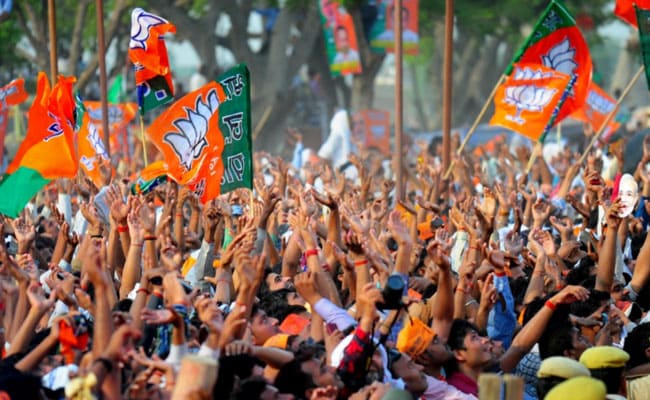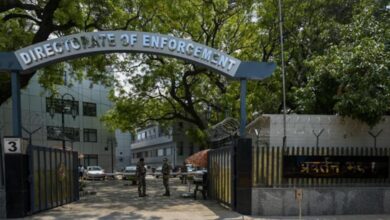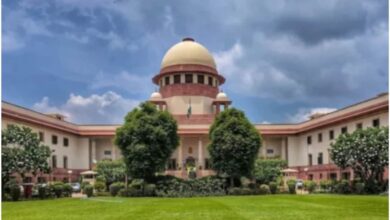BJP May Have An Opportunity In Jharkhand

With the announcement of poll dates in Jharkhand, political activity is ramping up. Both NDA and INDIA blocs are busy finalising seat arrangements. The JMM-led INDIA government hopes to retain power through sympathy for Hemant Soren following his arrest and the Maiyya Samman Yojana, which provides income support to women. Meanwhile, the BJP-led NDA aims to capitalise on anti-incumbency sentiment and unfulfilled promises, such as unemployment allowances for youth and stove expense allowances for women.
In the 2024 general elections, the NDA was leading in 52 assembly segments (BJP 47, AJSU five), while the INDIA bloc was ahead in 29 seats (Congress 15, JMM 14). The simple majority mark is 41. While Lok Sabha elections are not always indicative of Vidhan Sabha outcomes, they provide a recent reference point since the last state elections were held five years ago.
The ‘Modi Premium’
The “Modi premium” that benefits the BJP in national elections tends to diminish at the state level, as observed in the past. Although the NDA won nine of the 14 Lok Sabha seats, it lost three seats compared to 2019, while the INDIA bloc captured five, sweeping all the ST-reserved seats.
Hemant Soren’s arrest by the ED appears to have evoked sympathy and consolidated support among the ST community, at least in reserved seats. However, this sympathy did not extend to other caste or demographic groups, including the 30% of Jharkhand’s population made up mainly of Biharis, Bengalis, and residents from Uttar Pradesh.
The BJP has maintained its support among upper castes, OBCs, and SCs. The ST-reserved seats have historically been a weak point for the BJP; it won only two of the 28 reserved seats in the 2019 assembly elections and was leading in just five of these seats in the 2024 general elections, while the JMM-INC combine was dominant in 23.
The Return Of Marandi
The BJP has been bolstered by the return of former CM Babulal Marandi. His party, JVM(P), won three seats with a 5.5% vote share in 2019 and harmed the BJP’s chances in two seats during the assembly polls. Critics, however, argue that he is past his prime and point to the BJP’s poor performance in ST-reserved seats during the general elections.
Additionally, Sudesh Mahato’s AJSU, which contested separately in 2019 but has now rejoined the NDA, has a stronghold among Kurmi voters. The party won two seats with a 4.4% vote share in 2019 and adversely affected the BJP in three seats, receiving more votes than the winning margins.
AJSU may face competition from Jairam Mahato, a young Kurmi leader whose Jharkhand Bhasha Khatiyani Sangharsh Samiti (JBKSS) has been attracting large crowds. This party’s main goal is to secure a 1932-based domicile policy in Jharkhand, which deepens the insider-versus-outsider divide. In three Lok Sabha seats, it aided the BJP by splitting the opposition vote, garnering between 9% and 27% of the vote share.
Saryu Rai, the “giant killer” who rebelled against the BJP and defeated sitting CM Raghubar Das, has joined the JDU, which is likely to be allocated two seats. Rai enjoys a strong reputation in the Jamshedpur area.
Champai’s Entry
The BJP’s strength has also increased with the entry of former CM Champai Soren from the JMM. Champai became CM when Hemant was arrested by the ED but was subsequently replaced, which hurt his pride and led him to join the BJP. He hails from the Kolhan region, where the BJP failed to win a single seat in 2019, while the JMM won 13. The region has 14 seats, nine of which are reserved for the ST community. The Kurmi population there has turned against the JMM due to their exclusion from the ST list, which could benefit the BJP, particularly with Champai’s involvement, though they must remain cautious of Jairam Mahto’s party.
Another key area for the BJP is Santhal Pargana, which has 18 seats, seven of which are reserved for the ST community. The BJP won only four seats in 2019, with the JMM claiming 13. The BJP has been emphasising the issue of infiltration in the region, which it claims is altering demographics. It hopes to leverage a tribal-versus-minorities narrative and has promised to implement the NRC, attempting to create a Hindutva narrative in the region.
These two regions—Kolhan and Santhal Pargana—comprising 32 seats, are crucial for the BJP’s comeback bid. In 2019, the BJP won only four of these seats, while the JMM secured 26, giving them a 22-seat advantage. If the BJP gains a 5% vote share in these areas at the expense of the JMM-INC alliance, it could potentially gain up to 12 seats, increasing its total to 37 and reducing the INDIA bloc to 35, placing them below the majority mark.
How INDIA Bloc Is Faring
The INDIA bloc has strengthened with the inclusion of CPI-ML and CPIM, both of which have significant influence in the Palamu region bordering Bihar and around the Dhanbad coal belt. The MCC, another Left faction, merged with CPI-ML in August this year.
According to the 2011 census, the ST population in the state is 26%, while Christians make up 4%. Tribal Christians dominate politics, particularly within the JMM. This has created social tension, as Sarna tribals believe that converted tribals are unjustly benefiting from reservations available to both minorities and STs.
The BJP has been exploiting this divide between Sarna and Tribal Christians. Most STs supporting the BJP are Sarna tribals. However, in the 2024 general elections, the INDIA bloc garnered their support by promising to fulfil the long-standing demand for the implementation of the Sarna Code and recognition as a separate religion—demands that the BJP has historically opposed. This could complicate matters for the BJP.
(Amitabh Tiwari is a political strategist and commentator. In his earlier avatar, he was a corporate and investment banker.)
Disclaimer: These are the personal opinions of the author
Source link




